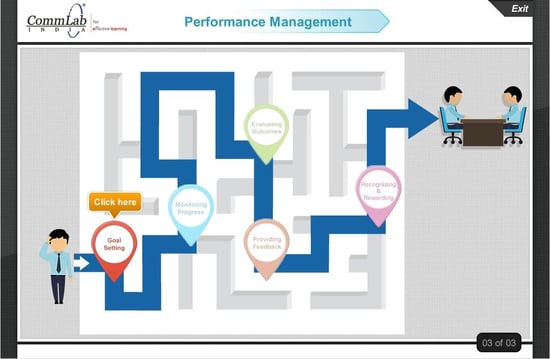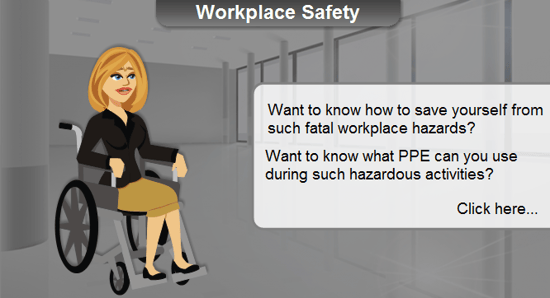Killing your Learners with Learning Objective Bullets? Articulate Storyline can Help!
This blog briefly talks about the importance of visual elements to retain information. Let’s look at a few creative ways to show the learning objectives in an e-learning course.

Clicked the Launch the Course button. The e-learning course pops up in a new window. Saw the attractive Welcome page and clicked Next, learned how the Navigational and other features work and clicked Next. Clicked Next again to start the main course content. Wait! Why did we click the Next button on the third screen without reading what it had to say?
Because it was this screen:

This is how we display the learning objectives in most of our courses. Not a bad way, but not a great way either. If you are taking an e-learning course for the first time, you may read them with great interest. The interest levels may be the same the second, third, and forth time around. Eventually, you will be skipping the learning objectives altogether. So how can we present learning objectives that avoid this fate? Read on.
Engaging Videos
A short video is a powerful tool that engages learners and also delivers the right message in less time. You can record a short video of the instructor or a senior manager talking about the need to take the e-learning. You must ensure they communicate the learning objectives in a real life context that learners can easily relate to. You can also create short animated videos which bring in the seriousness and importance of the topic. Apart from communicating the need, such videos hold on to learners’ attention and make them curious of what’s going to follow.

Click the image to view the demo
Attention-grabbing Infographics
Infographics are a great way to simplify complex concepts or ideas. Learning objectives may sometimes seem vague with just text. Designing learning objectives in the form of infographics will help you add life to them with a few visuals. They make the bland bulleted list an interesting read. For example, in case of sequential learning objectives, you can design an infographic that visually shows the learning objectives that must be achieved in sequence.

Milestones
Giving learning objectives in the form of milestones is another amazing idea. This approach can be used for gamified e-learning courses or for those which incorporate gaming elements. When learners successfully complete the activity related to the subject taught, they are said to have achieved the milestone or completed the learning objective. They would then be allowed to aim for the next milestone. Such an approach helps employees’ strive and achieve the learning objectives instead of just waiting for the content to come and go onscreen to complete the objective.

Pre-test
Giving a pre-test is a good way to assess the prior knowledge of learners; it also can be used to communicate the learning objectives of an e-leaning course. After posing a set of intriguing questions related to the content you’ll be talking about, you can say what you are going to talk about in detail in the course.

Scenarios
Scenarios are great means to communicate a message. You can use a scenario that shows the consequences of the lack of a skill. After this, you can say you are going to teach the particular skill the character in the scenario lacked so that you do not face such consequences. They can be very effective because they show the consequences of ignoring the content being provided.

These are 5 different styles of representing learning objectives visually. Such approaches help you communicate the need to take the course creatively. Do you know of other ways to add to this list? Do share with us.





